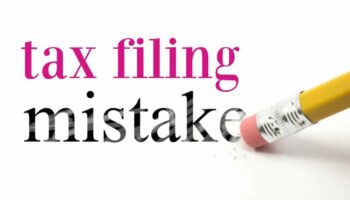In Canada and in most developed economies, salaried employees pay the highest tax rate on their income.
Employees can use tax credits and deductions to lower their tax burden. However, there are limits to this for employees compared to the deductions business owners can claim.
I regularly educate my clients on better ways to plan and reduce their taxes. For example, if you know that different types of income attract different tax rates, you can plan to generate more income with preferential tax rates. In an earlier article, I discussed the four main groups of income in Canada.
While most Canadians know that the personal tax rates are high, very few are aware of other options they can use to lower their taxes. In this article, I discuss 7 options that you can consider.
1. Negotiate for a “permanent” office at home
The COVID-19 pandemic forced most employers to make changes that will allow their employees to work from home.
As an employee, you’ve now worked from home for several months, some of you doing so for the first time.
As companies are now considering return-to-work scenarios for their employees, this may be an opportunity for you to negotiate for a “permanent” home office.
Doing this can allow you to deduct many home-related costs that you’re already paying for.
For you to qualify for the deduction, your home office must either be your principal place of work (more than half your working time must be spent there), or it must be a space designated solely for your work and used on a regular and continuous basis for meeting customers or clients.
Your employer will issue you a signed government-required form documenting the arrangement for you to work from home. You will require this document when it is time to file your tax returns.
By deducting part of your home expenses, you can lower your overall taxes.
2. Hire an assistant to help you
If you have a work arrangement that allows you to hire and pay for your own assistant you’ll be entitled to deduct reasonable compensation paid to that assistant.
This provides a great opportunity to income split if you have a family member — spouse or children — that are in a lower tax bracket than you are.
By doing this, you can deduct this expense and shift income that would have been taxed at your top marginal tax bracket to a much lower income bracket. In some cases, you may completely eliminate taxes on this income if your assistant earns approximately $13,000 per annum.
If you’re considering this option, it’s important to have your employer put it in writing that you are required to hire an assistant.
If you’re unsure whether your work arrangement will allow you to hire an assistant, can you pitch this idea to your employer? Your employer has nothing to lose. In fact, they may stand to gain from this option as you will likely be more efficient in your role.
You win and your employer also wins!
3. Time your employment income
If you find yourself in a situation where your marginal tax rate is expected to be lower in 2021, consider deferring the receipt of certain income, such as bonuses, until January 2021.
If your marginal tax rate will be lower this year compared to 2021, you may negotiate with your employer to speed up the payment of your bonus or other income to save taxes.
4. Reduce your taxable benefit on a company car
If your employer gives you access to a company car for personal use, you’ll have to pay tax on the benefit. This is referred to as a standby charge and is generally equal to 2% of the original cost of the car per month or, in the case of a leased vehicle, two-thirds of the lease cost, excluding insurance.
Most employees that drive a company-provided vehicle don’t often realize the impact of the taxable benefit associated with the use of the car on their tax bill.
You can easily reduce this taxable benefit or at best, avoid it.
One way to reduce this benefit is by using the car primarily (i.e., more than 50%) for business and by ensuring that your annual personal driving does not exceed 20,004 km.
Also, any payment you make during the year to your employer in respect of the car, other than an operating expense reimbursement, reduces the taxable benefit.
Other options to consider to ensure you reduce your taxes include:
- Maintain car records of personal and business kilometers to substantiate a claim for a reduced standby charge.
- It may be advantageous to calculate the operating benefit as 50% of the standby charge if the car is used at least 50% for business, particularly if the reduced standby charge applies.
- If you use your employer-provided car less than 50% for business, consider paying for the personal portion of your operating costs.
- Consider reducing the number of days the car is available to you by leaving it parked at work if you can.
- You might also consider buying the vehicle from your employer at the depreciated cost, or you might choose a less expensive vehicle (which will reduce your taxable benefit).
5. Ask your employer to set up a scholarship program
You can negotiate with your employer to contribute funds to an internal scholarship program to provide funding to the children of employees for post-secondary education, without tax to the employees.
The student (when they make it to post-secondary institution) will receive the amount as scholarship income, which will likely be eligible for tax exemption if they are not generating other sources of income from work.
Your employer could, for example, allocate some discretionary bonus money to the scholarship program.
6. Borrow from your employer
When it comes to loans, employees hardly consider asking their employers. If you are looking to borrow money for any reason, consider negotiating a loan from your employer.
A taxable benefit results from most low-interest or interest-free loans from your employer. The taxable benefit is calculated using the interest rates prescribed quarterly by the Canada Revenue Agency (in 2020, 2% for Q1 and Q2). But this benefit is reduced by the interest you pay to your employer by January 30 of the following year.
As long as the interest charged is at or above the prescribed rate (currently 2%) there will be no taxable benefit to you.
In addition, given that the prescribed rates are generally lower than commercial rates, you save on interest costs.
7. Negotiate non-cash gifts or awards
Did you know that there are many tax-free benefits you can get as an employee?
Consider negotiating with your employer to include some of the tax-free benefits in your employment contract. And minimize the taxable benefits where possible.
Some examples of tax-free benefits include:
- Contributions to a registered pension plan or deferred profit-sharing plan
- Private health-care premiums (except in Quebec)
- Employee discounts offered to all employees on merchandise sold by your employer
- Subsidized meals, when a reasonable charge is paid
- Club memberships (athletic or social), when the benefit is primarily for your employer
- Tuition, if the course is required by your employer and is primarily for their benefit
- A reasonable per-kilometer car allowance
- Use of the employer’s recreational facilities (if available to all employees)
- Reimbursement for various job-related expenses (e.g., travel, entertainment, moving)
- Death benefit up to $10,000
- Non-cash gifts received by arm’s-length employees with an aggregate annual value of under $500
- Personal use of frequent-flyer points when earned on your business travel, in most circumstances
- Business use of employer-provided cell phone or internet service
Get the benefit and pay no taxes! But you have to ask your employer.
Final Thoughts
Now you have some ideas to consider when next you meet with your employer.
By implementing at least one or a few of these ideas, you can lower your taxes.
Remember, money saved in taxes could be put to other uses…
Save it.
Invest it.
Give it.
Enhance your lifestyle with it.
P.S. Join my mailing list here to be notified of how you can join my 5-Day 1-hour-a-day challenge starting on July 6. This challenge will reveal many misconceptions and myths about money and financial freedom no matter your income level. At the end of the challenge, you will be super equipped to avoid the many money mistakes you make that prevent you from building and accelerating your wealth! This challenge will put you on the path to financial freedom and help eliminate all your money worries forever!






